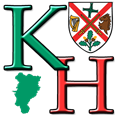Though a lot of records have been lost down through the years much remains. Any search should start with the present, work backwards and facts treated carefully!
Those Living
The most important source for your family tree are your own relatives. For obvious reasons start as soon as possible with your older relatives and speak with everyone. Record everything no matter how trivial or dubious it may seem. Even if certain details are not quite what they seem note them. At the very least it could be an interesting anecdote. All information should be treated sensitively and with care. Memorabilia, photographs, documents can be copied to make very interesting scrapbook material.
National Census 1901 & 1911
For most people these are the only two years for which worthwhile information is available. Details given include names, ages, marriage status, occupation etc. Compared to the modern census they are quite basic. Nevertheless they are a must see for genealogists and can be viewed on microfilm at the National Archives of Ireland, Dublin and various county libraries. Also they are now available on the web.
Griffith’s Valuation 1850s
This is a systematic land valuation of Ireland listing names and holdings. It does not in general detail those living in towns- however it is an invaluable record for mid 19 the Century Ireland and are widely available.
Church Records
The majority of people were members of the Catholic Church and hence these are of greatest value. However the other religions should not be forgotten- quite often there are better and earlier records available than for the majority Catholic faith. Baptism registers are of the most value- however dates covered, veracity and legibility vary widely. Depending on the parish, start dates vary from the late 1700’s to 1870’s and microfilms are available in the National Library, Dublin (not all).
Civil Register
For most people civil registration of births, deaths and marriages started in the 1860’s. For family research purposes the latter are the most valuable and easiest to work with. The Dublin City Library (Gilbert), Pearse Street is the easiest location to view (extended opening hours).
There are many other sources which can prove invaluable and should be consulted. If you are lucky you may find detailed estate rentals with maps going back to the 1700s.

